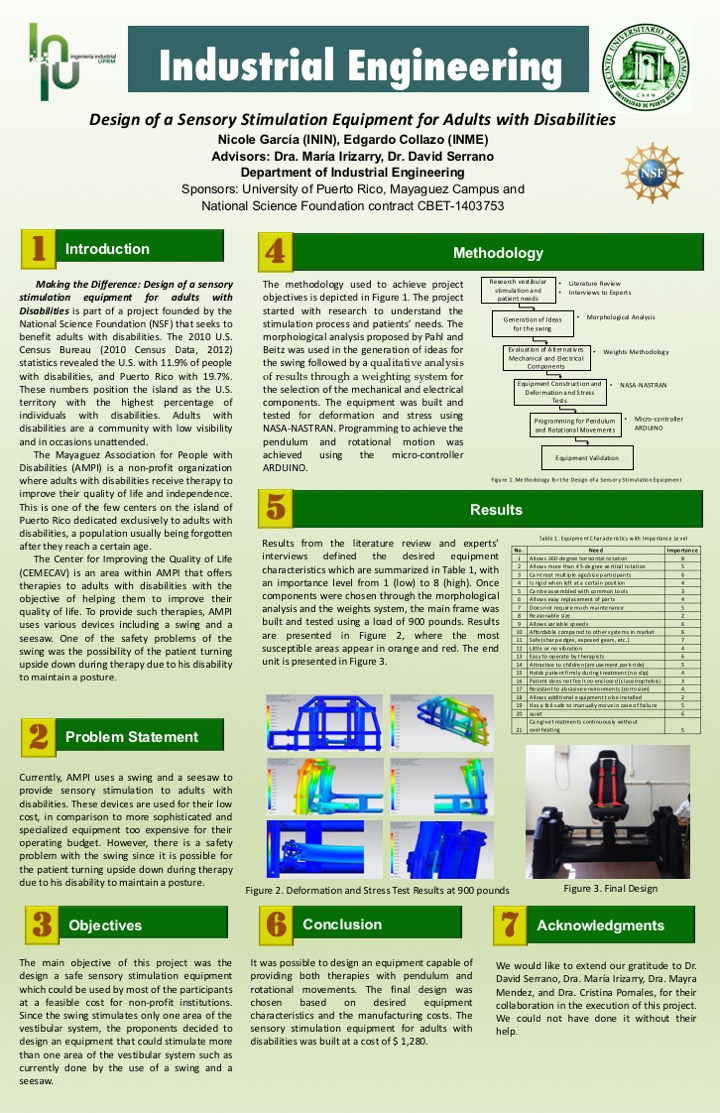Making the Difference: Design of a Sensory Stimulation Equipment for Adults with Disabilities
Student Team:
Nicole García, Industrial Engineering Senior Student
Edgardo Collazo, Mechanical Engineering Senior Student
Faculty Mentors:
María Irizarry, PhD
David Serrano, PhD
Cristina Pomales, PhD
Mayra Méndez, PhD
Project Synopsis:
Making the Difference: Design of a sensory stimulation equipment for adults with Disabilities is part of a project sponsored by the National Science Foundation (NSF) that seeks to benefit adults with disabilities. This project creates a design for a sensory stimulation equipment, specifically to work with the vestibular area. The motivation was in response to a safety problem related to the swing used to provide this stimulus at “Mayaguez Association of People with Disabilities, Inc. (AMPI)”. The Center for Improving the Quality of Life (CEMECAV) is an area within AMPI that offers therapies to adults with disabilities with the objective of helping them to improve their quality of life. To provide such therapies, AMPI uses various devices including a swing and a seesaw. One of the safety problems of the swing was the possibility of the patient turning upside down during therapy due to reduced upper body control to maintain a posture. Therefore, the objective of this project became the design a safe sensory stimulation equipment which could be used by most of the participants. Since the swing stimulates only one area of the vestibular system, the proponents decided to design an apparatus that could stimulate more than one area of the vestibular system such as currently done by the combination of a swing and a seesaw. The design methodology followed to accomplish the objectives included: (1) the morphological analysis proposed by “Pahl and Beitz, and Pugh” and (2) qualitative analysis of results through a weighting system. These techniques helped in the process of selecting the best alternative. The design process required the use of anthropometric measures of the Puerto-Rican industrial population developed by Sergio Caporal and Carla Gardos in 1997 under the supervision of doctor Zulma Toro. It was possible to design an equipment capable of providing both therapies with pendulum and rotational movements. A total of fifteen ideas were developed, analyzed and ranked in order of highest total points. The proponents chose the second best alternative based on its manufacturing costs. The sensory stimulation equipment for adults with disabilities was built at a cost $ 1,068.67. This project was supported by the National Science Foundation contract CBET-1403753, “Making the Difference: An Industrial Engineering Capstone Design Experience to Benefit Adults with Disabilities.”


